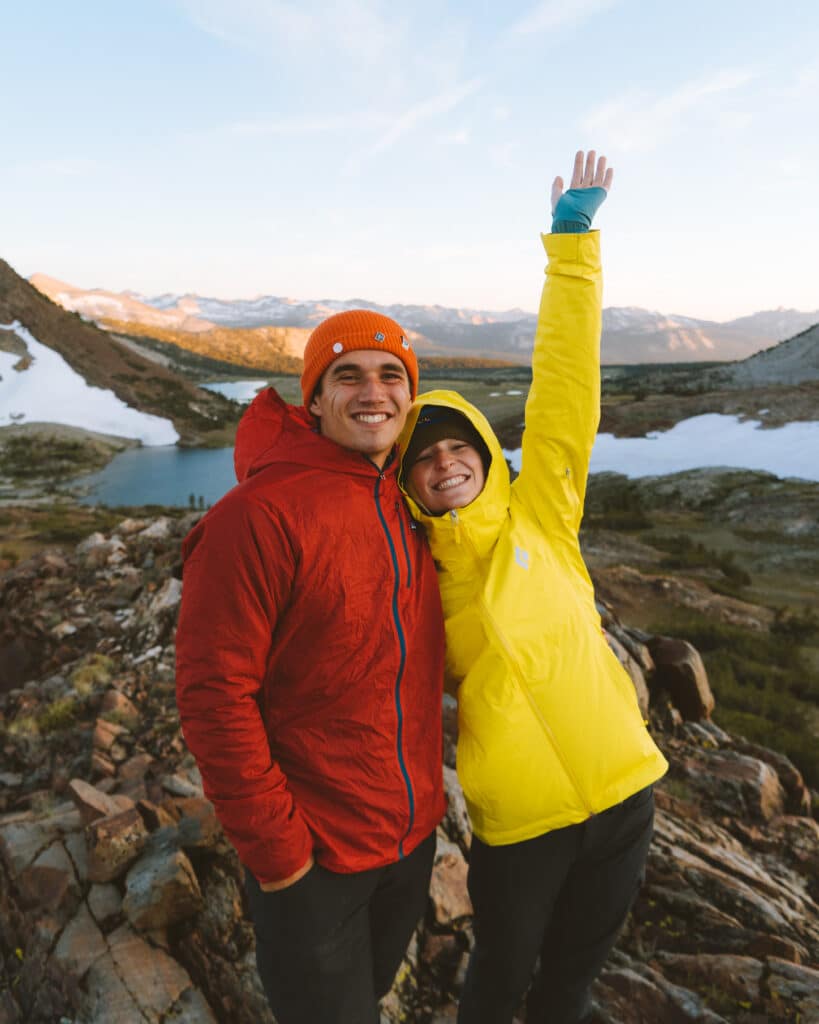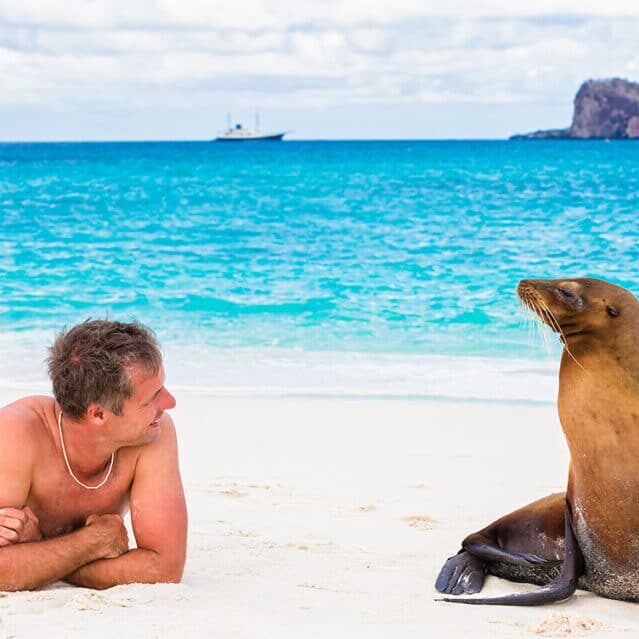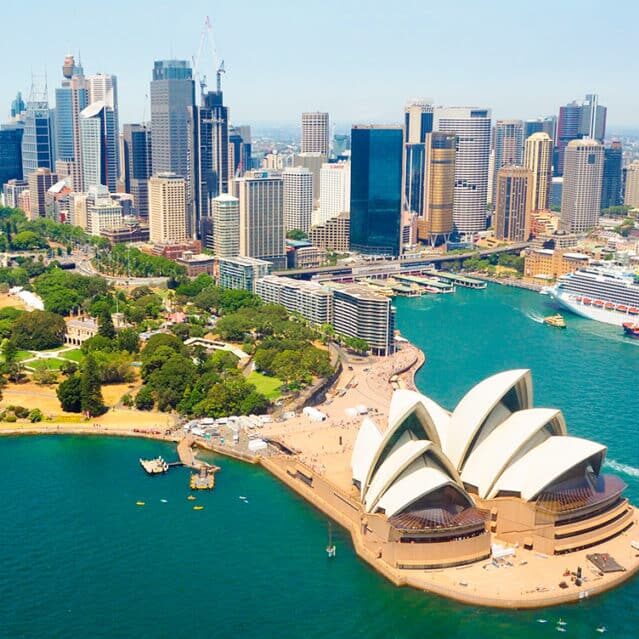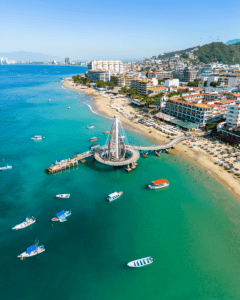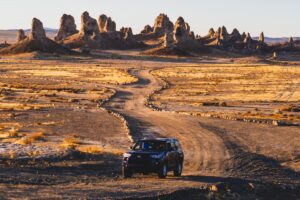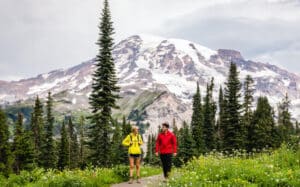The Ultimate Northern Lights Road Trip Itinerary: Finland, Sweden and Norway
Disclaimer: This post may contain affiliate links. Please see our Disclosure Policy and Advertiser Disclosure for details.
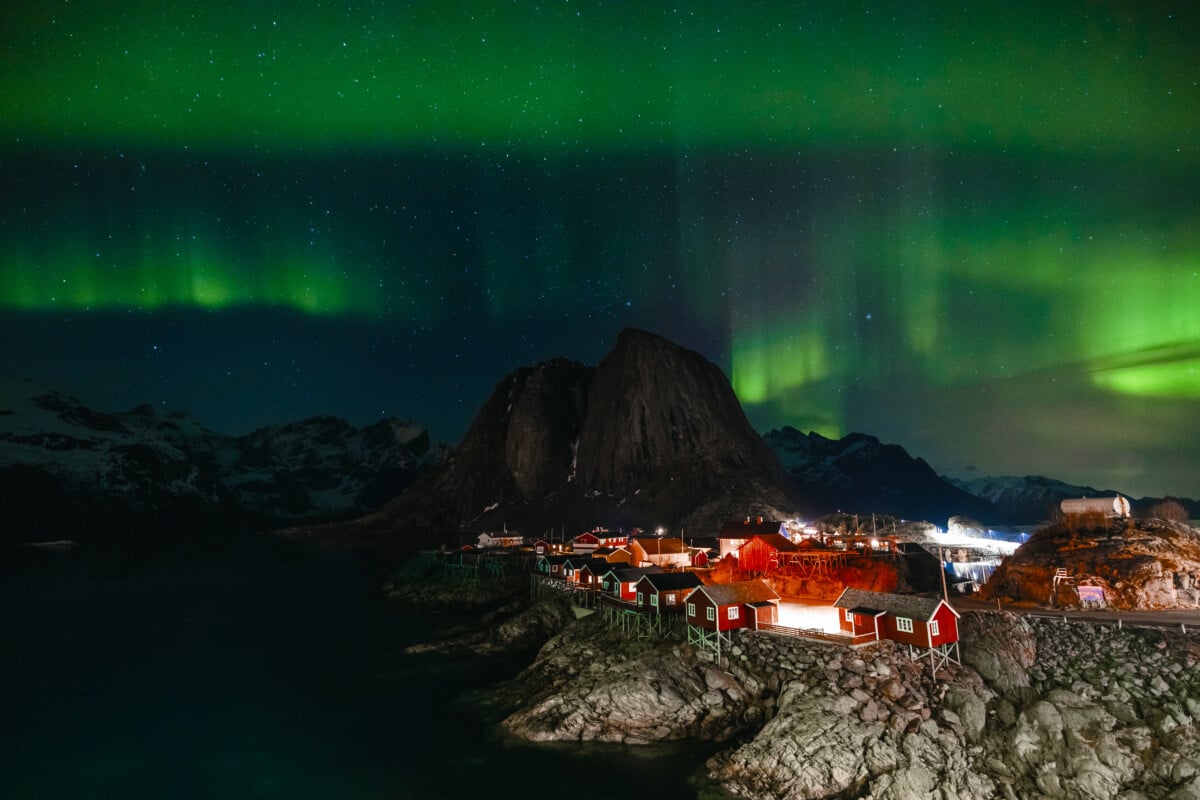
We just got back from an incredible 16 day road trip through Lapland where we managed to see the Aurora Borealis for 12/16 days! Our ultimate northern lights road trip itinerary took us through the incredible fiords and mountains of Norway to the lush winter wonderlands of Lapland.
There is truly nothing that prepares you for seeing the aurora dance above your head for the first time. You cannot compare this experience to anything else in nature, and we want to help you plan the perfect Northern Lights trip so you can also witness this once in a lifetime phenomenon.
This blog will go over exactly when and where to see the aurora borealis, the best spots in Norway, Sweden, and Finland to see the northern lights, as well as go over a full northern lights road trip itinerary so you can replicate our exact trip yourself!
How to Plan a Northern Lights Road Trip
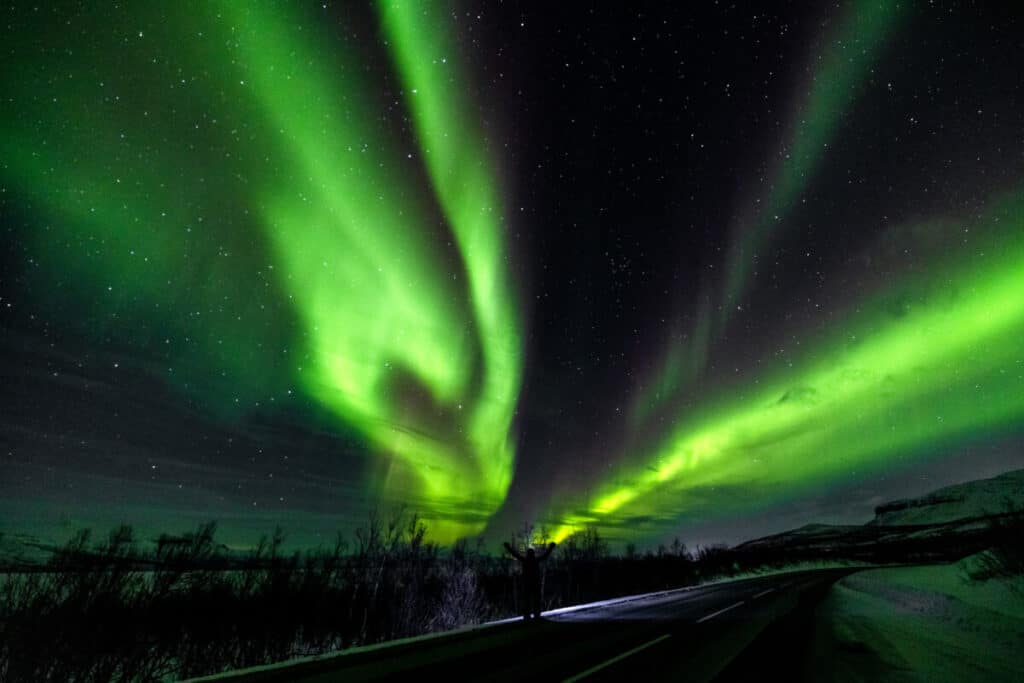
I planned this exact itinerary by using a mix of our prior knowledge from our first trip to Rovaniemi, local guide recommendations, Aurora live camera locations, and lots of additional research. We’ll go over everything you need to know about planning your Northern Lights road trip out here.
Best Time to See Northern Lights in Lapland
The aurora borealis comes out in Norway, Finland, and Sweden from September-April. This is when the nights are darkest and longest. However, in our opinion, the best months to see the Northern Lights are March, September, and October.
This is because the temperatures are still warmer where you are not freezing while aurora hunting, there is a lower likelihood of clouds blocking your view, and March & September have the equinoxes, which can increase your chances of seeing stronger auroral activity.
When we had previously gone to Rovaniemi in January 2023 for a full week, we did not see the lights a single time because it was so snowy and 99% cloud coverage. Whereas when we went in March, we saw them almost every single night.
How long should I plan on visiting Lapland?
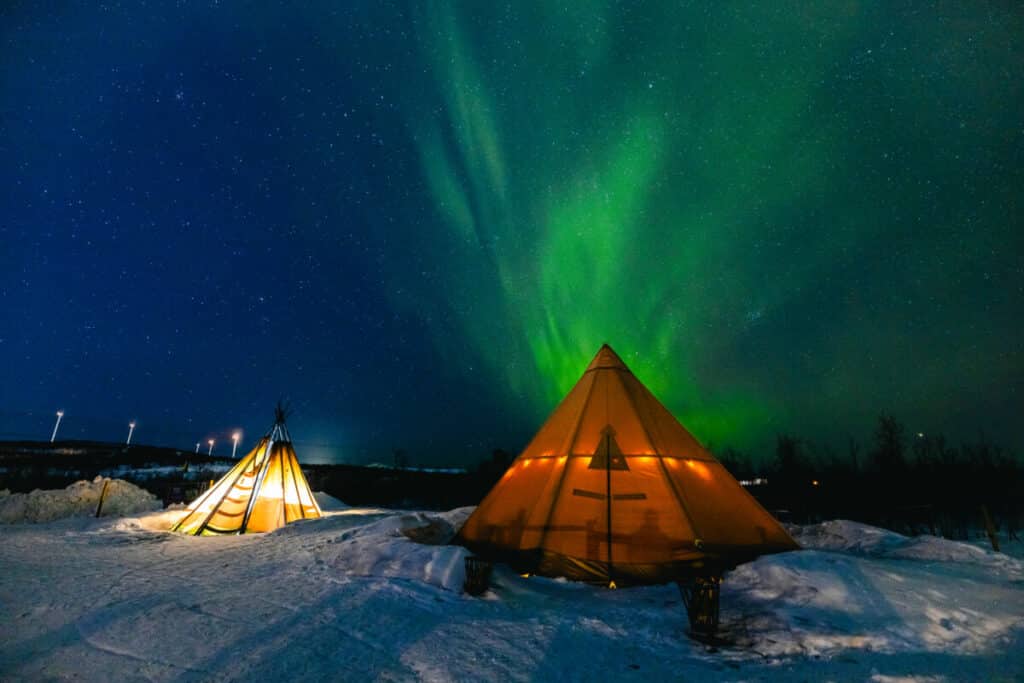
If you are serious about seeing the best aurora borealis possible, we’d recommend giving yourself two weeks to complete this road trip itinerary. However, if you’re strapped on PTO or time, give yourself a minimum of one week and you can simply break this itinerary into smaller, more regional sections such as just the Lofoten Islands or just a road trip around Northern Finland.
Which airport should I fly into for a Northern Lights Road Trip?
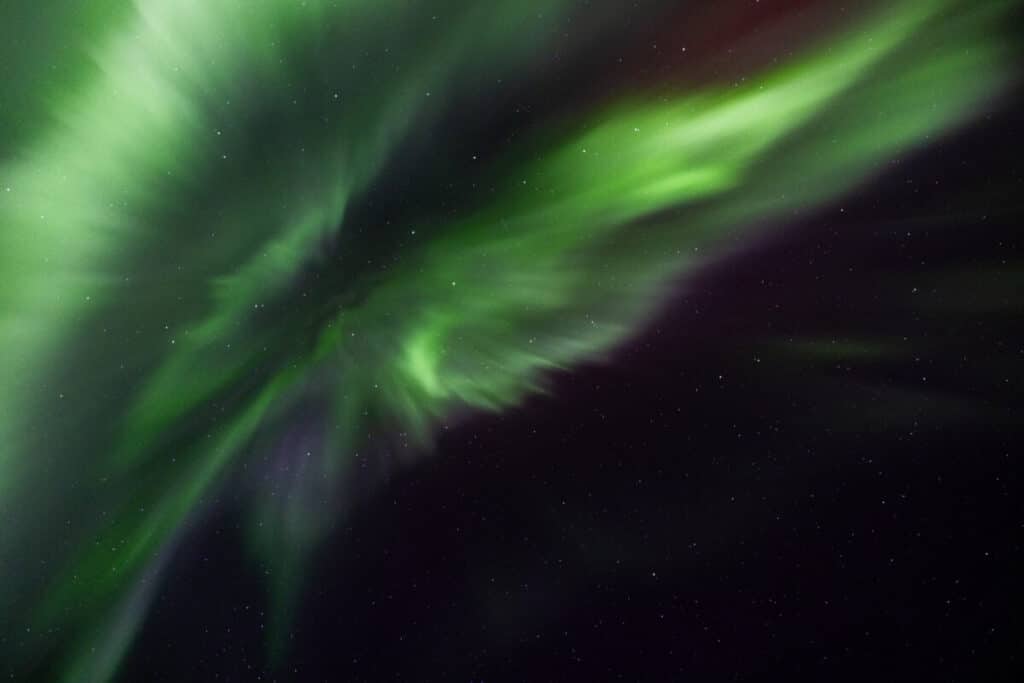
You have a few options depending on your budget and where you are flying from! For us, personally, we have explored Lapland both times by flying round trip from Rovaniemi, Finland (RVN) via Finnair. We typically have to connect in Helsinki, Finland because RVN is a pretty small regional airport. Typically, we’ve seen flight prices to RVN from Los Angeles (where we fly from) to be the cheapest option when compared to other options in the area.
Other Airports You Can Fly Into:
- Tromso, Norway (TOS)
- Ivalo, Finland (IVL)
- Kittilä, Finland (KTT)
- Svolvaer Helle, Norway (SVJ)
We’d recommend setting flight trackers on Google Flights and Skyscanner to track the cheapest flights. Additionally, sign up for Thrifty Traveler Premium, which is a subscription service that will send you cheap flight drop notifications if the fare drops at any point as well as Points & Miles deals! Our readers can use the exclusive code PASSPORT10 to save $10 off your membership (it’s saved us thousands of dollars)!
Driving Around Lapland
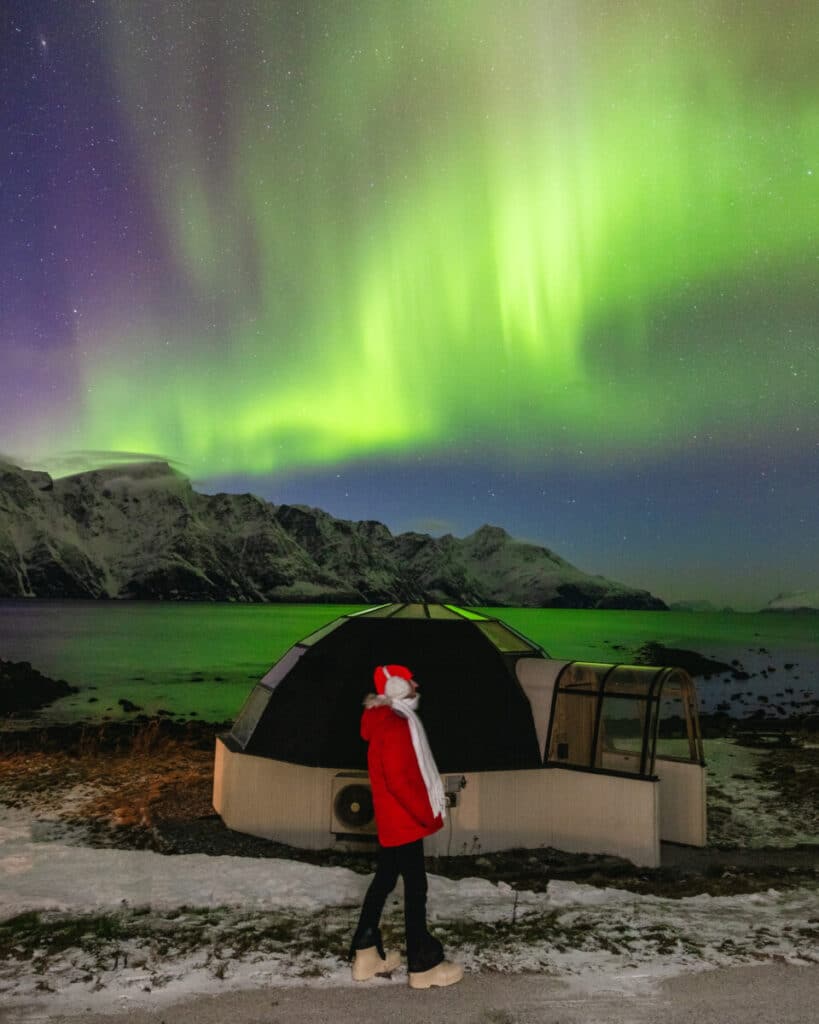
We have rented a car both times from Hertz at the Rovaniemi Airport we visited Lapland, and would definitely recommend doing this if you’re planning to follow this Northern Lights Road Trip Itinerary. Keep in mind, you need to call or email them in advance asking for the ability to cross borders in Sweden and Norway in your rental vehicle (it’s allowed, but just incurs a small fee).
Fair warning, there is a LOT of driving involved if you’re planning on doing this whole thing. If you don’t have a ton of time or don’t like driving, we’d recommend splitting this itinerary up into smaller pieces to make it more manageable for your time and preferences!
Don’t be too worried about driving in the snow during winter out here! The roads are super maintained and the cars often have snow tires on them.
What to Pack for a Winter Trip to Lapland
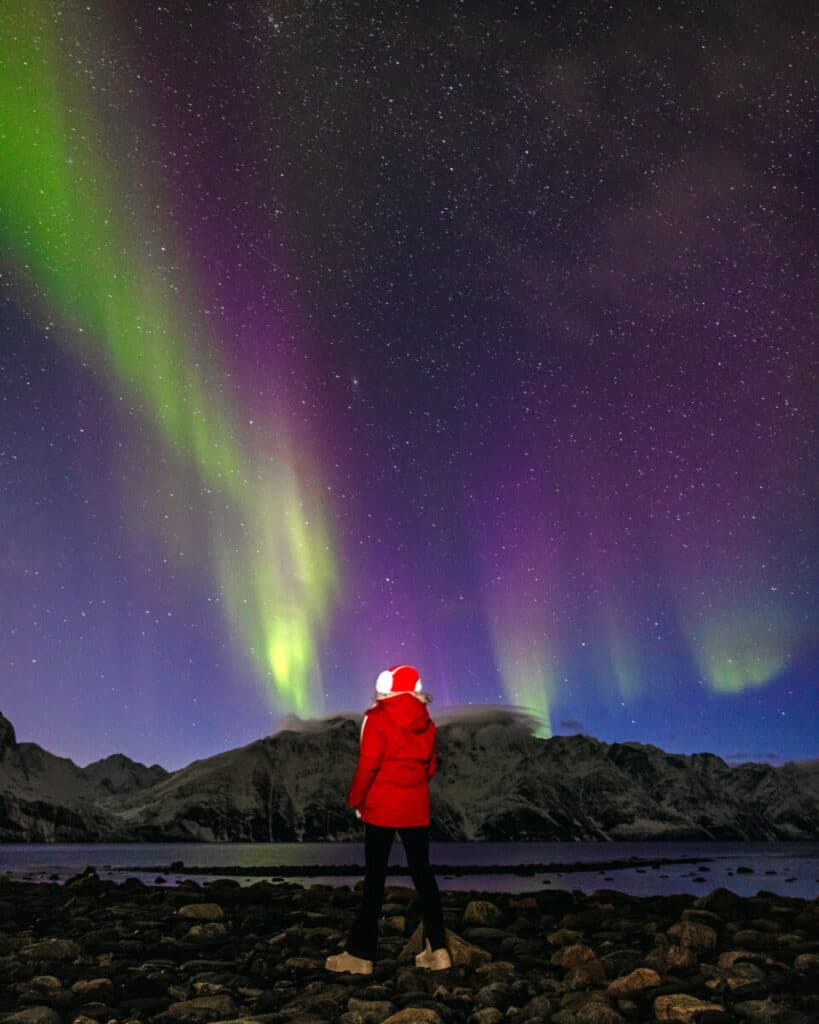
When packing for this arctic adventure, prioritize thermal clothing to insulate against the cold; think layers such as thermal underwear, fleece jackets, and a waterproof winter coat. Essential accessories include a warm beanie or earmuffs, gloves, rechargeable hand warmers, and a scarf.
Good footwear is crucial, so opt for insulated, waterproof boots to navigate the snow more comfortably. My personal favorite boots are from Fubuki Boots (for casual wear) and from Wolverine Boots (for hiking). If you are opting to head out and snowshoe at all, make sure to pack a headlamp, snowshoes and/or microspikes, and your hiking 10 essentials with a backpack. However, if you don’t want to pack snowshoes, you can always rent them as well as ice axe’s when you arrive.
If you’re a photographer, don’t forget to pack extra batteries, as the cold can drain them quickly. Lastly, a high-quality camera with manual settings is a must to capture the ethereal beauty of the auroras, along with a tripod to stabilize your shots in low light conditions. You can find all of our top photography recommendations for this trip here.
What Causes the Aurora?
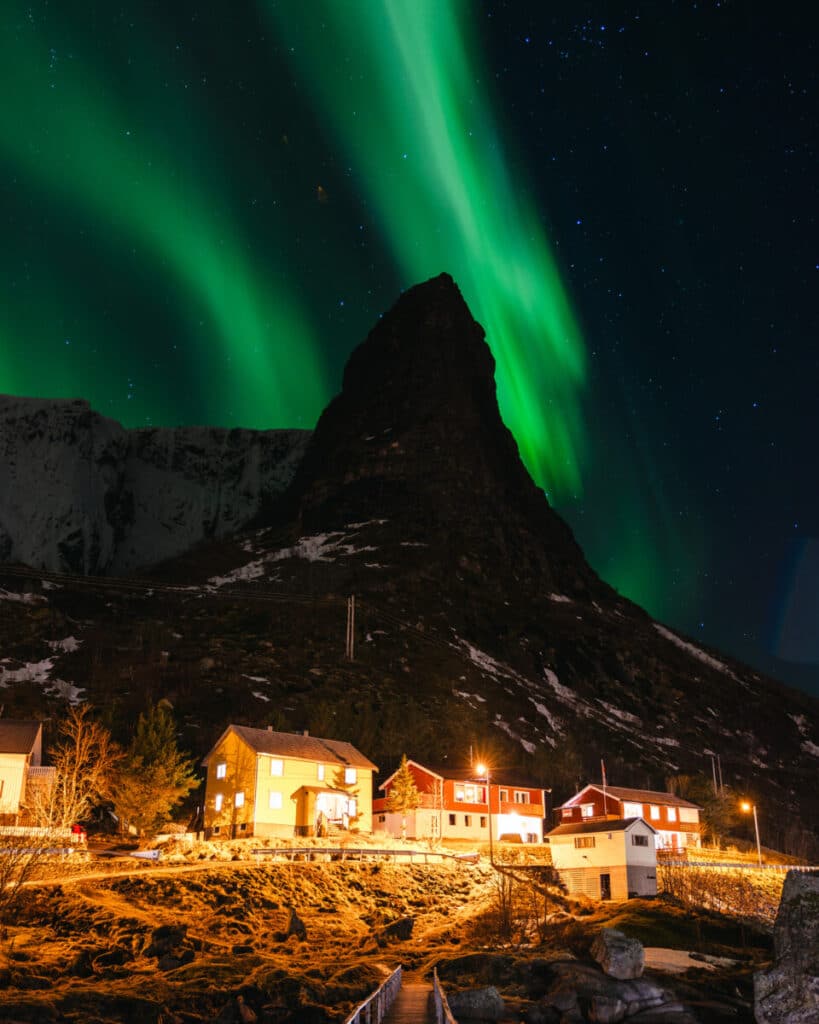
The Northern Lights are caused by solar wind interacting with the Earth’s magnetic field. Increased solar activity, such as solar flares and sunspots, can lead to stronger and more frequent auroras.
The intensity and occurrence of auroral displays are influenced by the activity of the Sun. Solar flares and coronal mass ejections (aka CME) can dramatically increase the intensity of the solar wind, leading to more spectacular aurora displays, which can sometimes be seen at lower latitudes than usual.
The different colors of the aurora are determined by the type of gas molecules involved and the altitude at which the interactions occur. Oxygen molecules high in the atmosphere (above 150 miles) can emit rare, red auroras. More common are the green lights, which occur when charged particles collide with oxygen at lower altitudes (between 60 and 150 miles). Nitrogen molecules can produce blue or purplish-red auroras.
What are the chances of seeing aurora borealis?
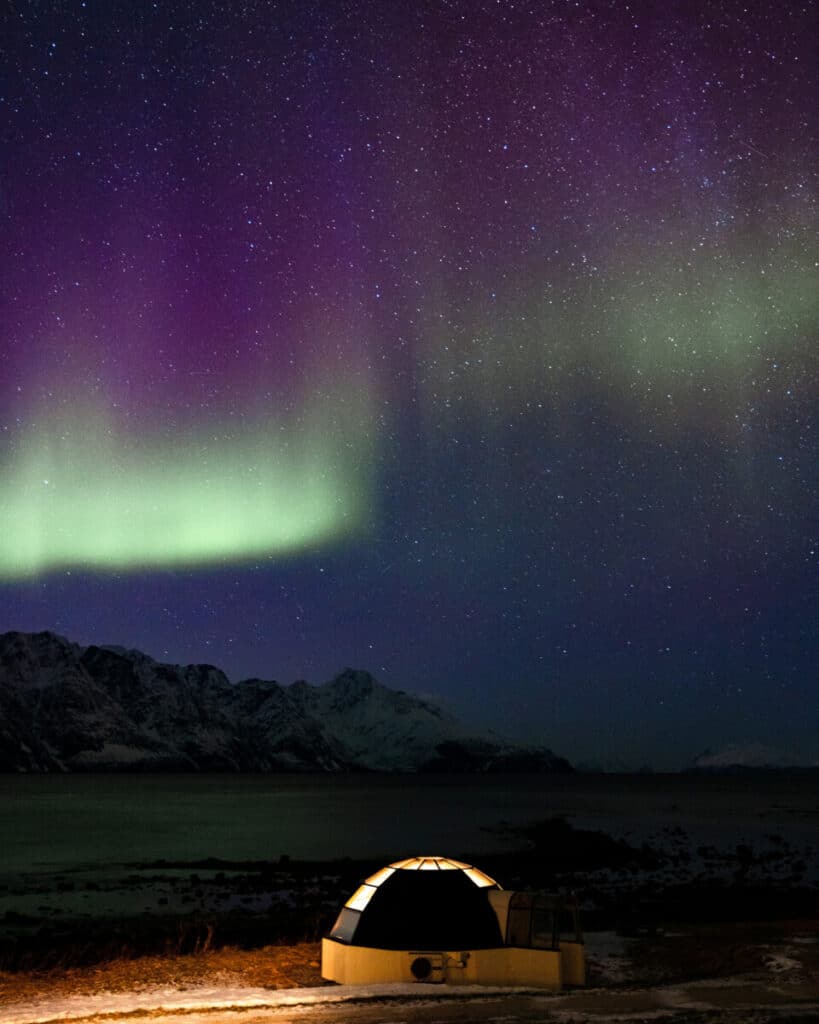
There are 5 main factors that are going to affect your chances of seeing the Northern Lights while out on this road trip:
- Clouds & Visibility: If you have fully cloudy skies, you won’t have aurora. We used the app Windy to track cloud coverage throughout our entire trip. You want to find a location near you that has clear visibility. Sometimes, making a simple 1-2 hour drive away from your location can get you out of the clouds and allow you to see the aurora so it’s important to consistently check conditions!
- KP Index: The Kp index measures geomagnetic disturbances. A higher Kp index (4 and above) often indicates better chances of seeing the Northern Lights. However, since this aurora road trip itinerary keeps you above the Arctic Circle for the whole trip, you shouldn’t worry about KP Index as much. When you are above the Arctic Circle, you really only need a KP 1 or 2 in order to see them as you are located within the Auroral Oval, which is the area with the highest probability of auroral activity. KP plays much more of a factor if you are trying to see them further south.
- Solar Wind Data: Real-time data on solar wind speed and the interplanetary magnetic field (IMF) can be indicative of aurora. Higher solar wind speeds and a southward IMF (Bz component) can enhance auroral activity.
- Light Pollution: Avoid light pollution by moving away from city lights. The darker the location, the better the visibility of the auroras.
- Time of Day: The best time to watch the Northern Lights is typically between 9 PM and 2 AM local time, although they can appear at any time during dark hours.
Resources to Help with Your Aurora Hunting

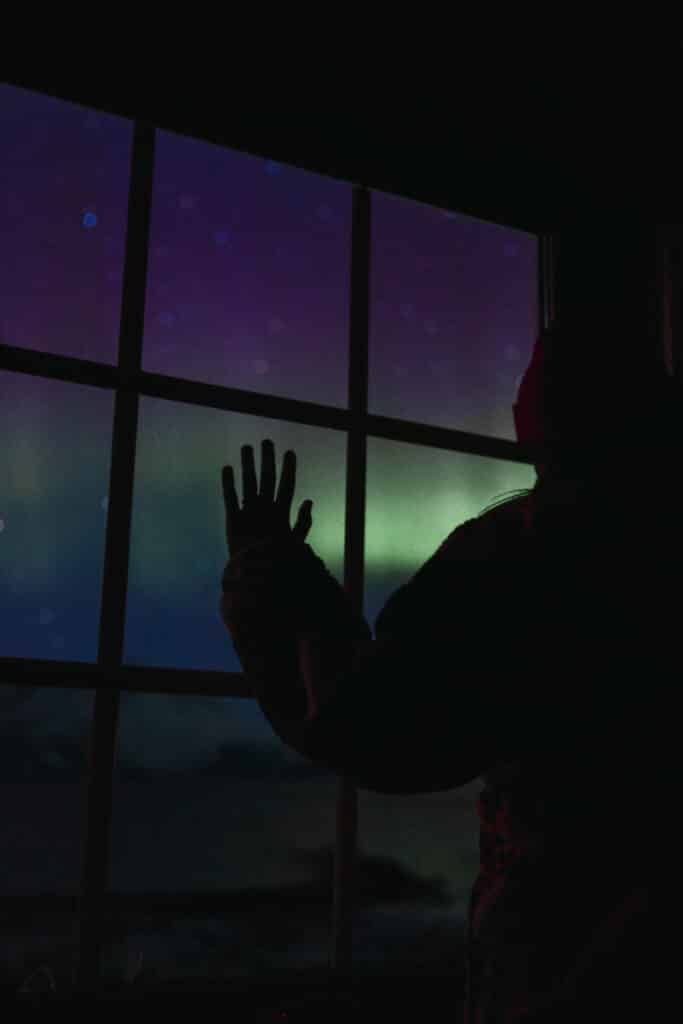
Apps to Download
- My Aurora: Best free overall Aurora app that was 100% accurate every time we saw the Northern Lights on our road trip.
- Meteo Agent: Gives a great hour by hour overview of what the KP Index will be like in your location.
- Windy: The best weather app for tracking the cloud forecast hour by hour.
- Space Weather Live: The best app to track solar storms and potential Aurora spikes when it comes to geomagnetic activity.
Now that you know what affects the aurora and how to properly track it for your road trip, we can get into planning your trip itinerary!
Best Northern Lights Itinerary Around Finland, Sweden, and Norway
Stop #1: Rovaniemi, Finland
Begin your aurora road trip in Rovaniemi, the official hometown of Santa Claus. Located right on the Arctic Circle, it’s an ideal spot for Northern Lights viewing. It is also one of the easiest airports to get to in terms of logistics from the USA, which is why we have home based in Rovaniemi both trips we’ve been out to Lapland. Make sure to check out the home of Santa Claus at Santa Claus Village; yes, even though it’s touristy, it’s worth checking out. There’s a ton of winter activities around the town like dog sledding, snowmobiles, ice karting, and more!
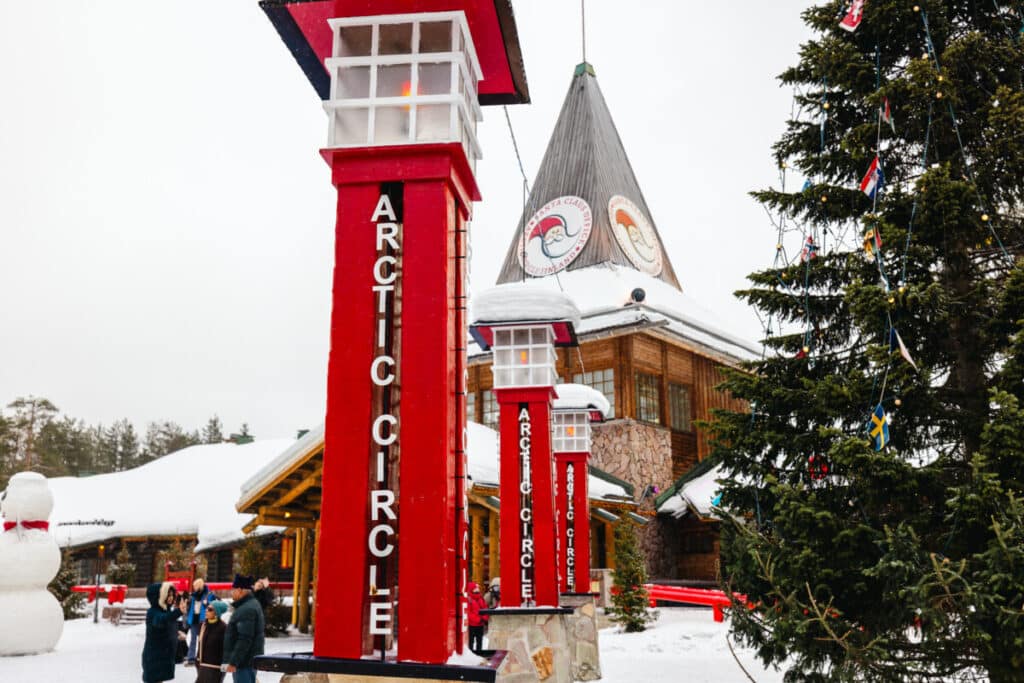
Where to Stay in Rovaniemi
Stop #2: Kiruna, Sweden
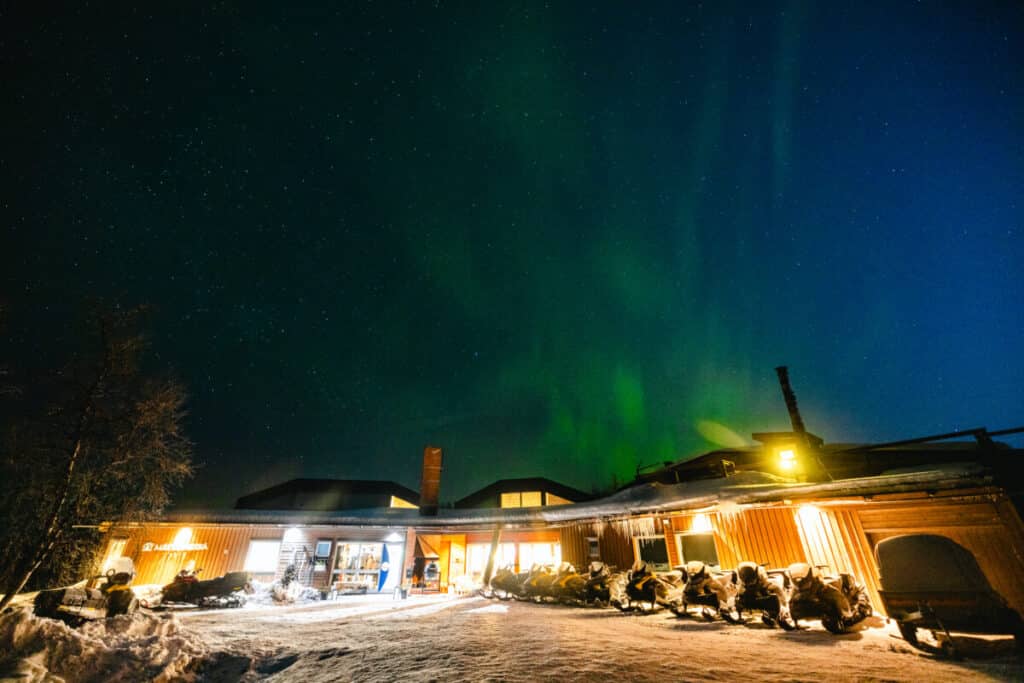
Kiruna is more of a low key, hidden gem of a destination for aurora hunting. It was great because it felt much less crowded than the other destinations along this route and it was equally as magical. Plus, there’s little to no light polution in Kiruna so it was very easy to see the Northern Lights each night we were there, even from our hotel. The best things to do here are to go Husky Sledding or Snow Mobiling, or head into Abisko and visit some of the frozen waterfalls. You’ll definitely also want to check out the world’s first Ice Hotel, which is a short drive away from the city.
Where to Stay Near Kiruna
Stop #3: Abisko, Sweden
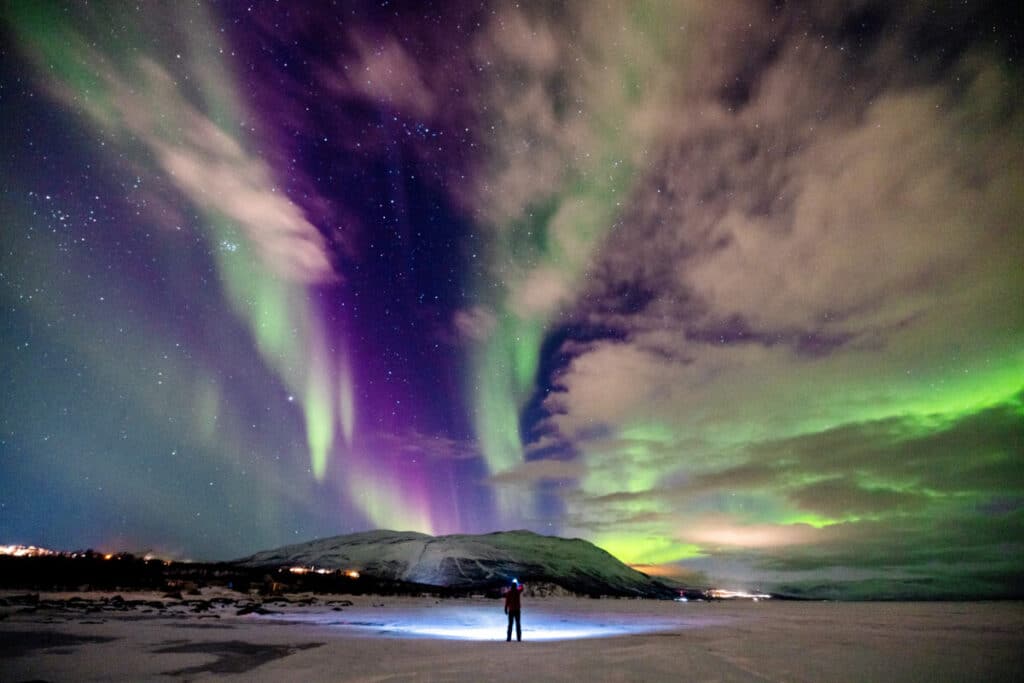
After Kiruna, continue on to Abisko, which is about an hour’s drive away. Abisko is renowned for having some of the clearest skies in Sweden due to its unique microclimate. The Aurora Sky Station offers a phenomenal viewing experience atop Mount Nuolja. It does cost money and book out in advance, so make sure to plan ahead if you want to take part in that experience while Aurora hunting!
We decided, instead, to head out to the Lake Tornetrask Pier to chase the northern lights and got incredibly lucky with the show out there! Abisko, like Kiruna, has little light pollution, so it was jaw dropping to watch the Aurora dance above us.
Between Kiruna & Abisko, we spent 2 nights and 3 days exploring this area, but if you’re short on time, you could defintely just pop in for one night. In that case, we’d recommend basing yourself in Abisko over Kiruna.
Pro Tip: Even if the weather says it’s cloudy here, it might still be clear due to the unique weather, so it’s worth a shot of still chasing Auroras in that case! The nice thing is there is a live camera to check in real time!
Where to Stay Near Abisko
Stop #4: Lofoten Islands, Norway
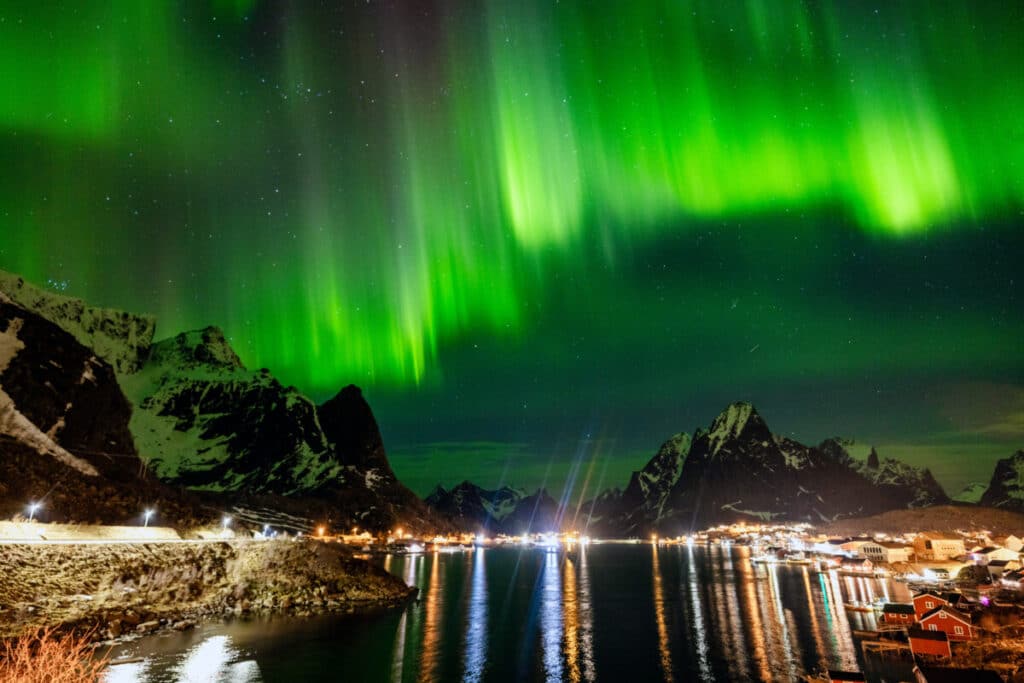
Now it’s time to leave Sweden behind and cross over into Norway to the stunning Lofoten Islands. This area was definitely our favorite place of the whole road trip itinerary! The Lofoten archipelago provides a dramatic backdrop of jagged peaks and fjords for your Northern Lights photography. And, by day, there are tons of quaint fishing villages and rugged coastal scenery to explore.
We spent the most amount of time here during our trip because Lofoten offered a ton of day time activities on top of great aurora hunting. During our 5 Days here, we did a ton of hiking and snowshoeing, went kayaking into some of the fjords, and went on a quest for the best cinnamon bun. Our favorite coastal villages were Reine, Sakrisoy, Ballstad, and Hamnoy. Keep an eye out for our full Lofoten Islands Winter Guide coming soon!
Where to Stay Near Lofoten Islands
- Hattvika Lodge, Ballstad (*Where We Stayed)
- Catogarden, Reine (*Where We Stayed)
- Sakrisøy Rorbuer, Reine
- Eliassen Rorbu, Hamnoy
- Lofoten Cabins, Kåkern
Stop #5: Tromso & Lyngen Alps, Norway
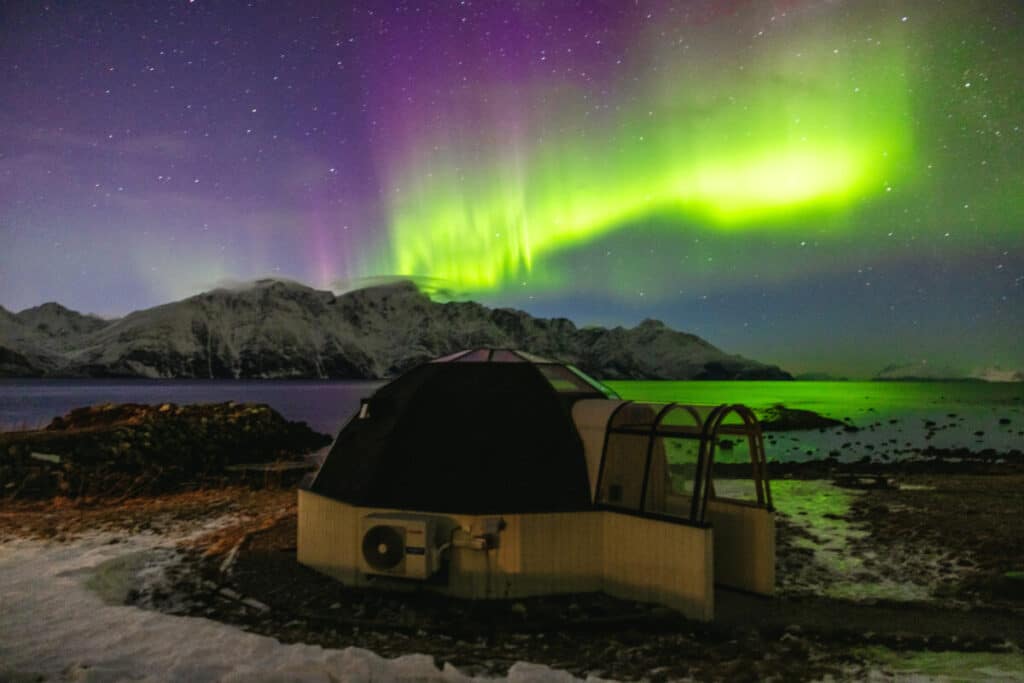
Next up, you’re driving quite a bit to get up to the northernmost part of Norway. Enjoy the incredibly epic views along the way as you drive the fjords to get up to Tromso and the Lyngen Alps.
If you like backcountry skiing and snowshoeing, you will absolutely love this area. This region probably had the best settings for aurora in that it has zero light pollution. Our hotel, Lyngen North, also had an incredible alert system that would turn off the lights if the Aurora would go off, and it would turn on a signal in the lobby to let you know the Aurora was out so that was super cool.
Stop #6: Ivalo, Finland
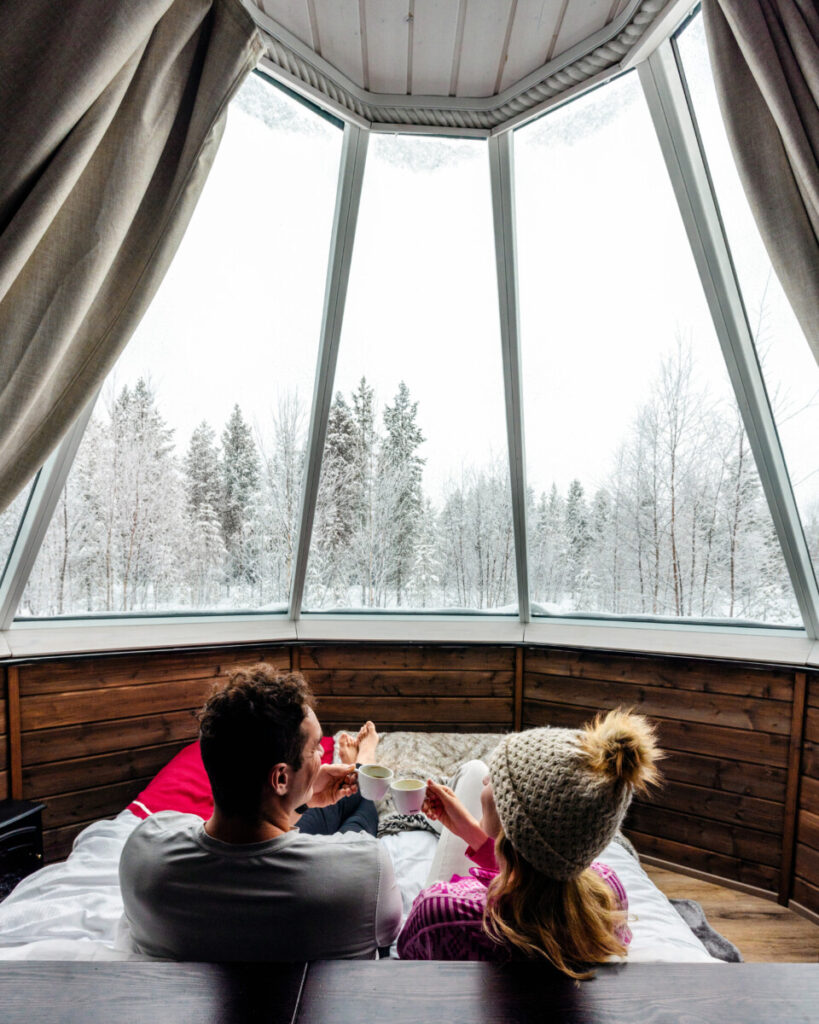
Sadly, it’s time to say goodbye to Norway, but you’re heading into our favorite area of Finland! Ivalo has so much to do in the area as well as great Northern Lights hunting. During the day, head out on a snowmobile, a sledding tour, or try ice karting. Or, you can head to the nearby ski resort of Saariselkä for some skiing or snowboarding. We were able to do all of this at our lovely resort, Aurora Village Ivalo.
At night, if you’re feeling ambitious you can try an authentic Finnish sauna experience next to a frozen lake before or after you go aurora hunting.
Stop #7: Levi, Finland
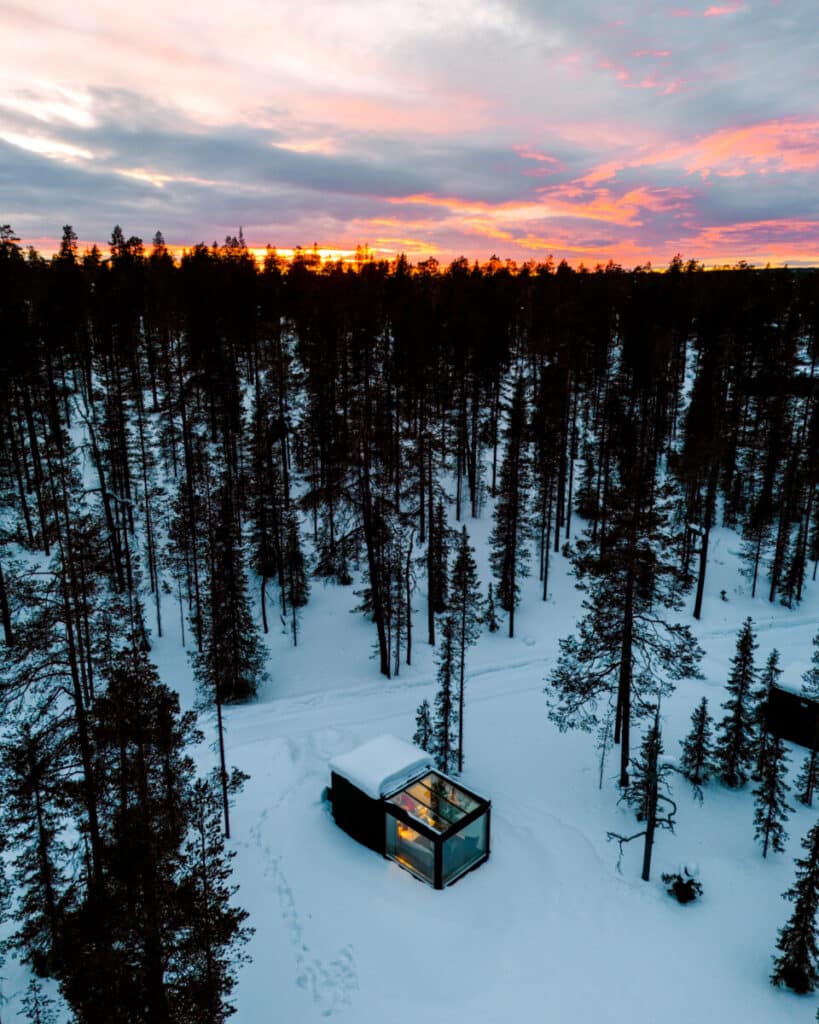
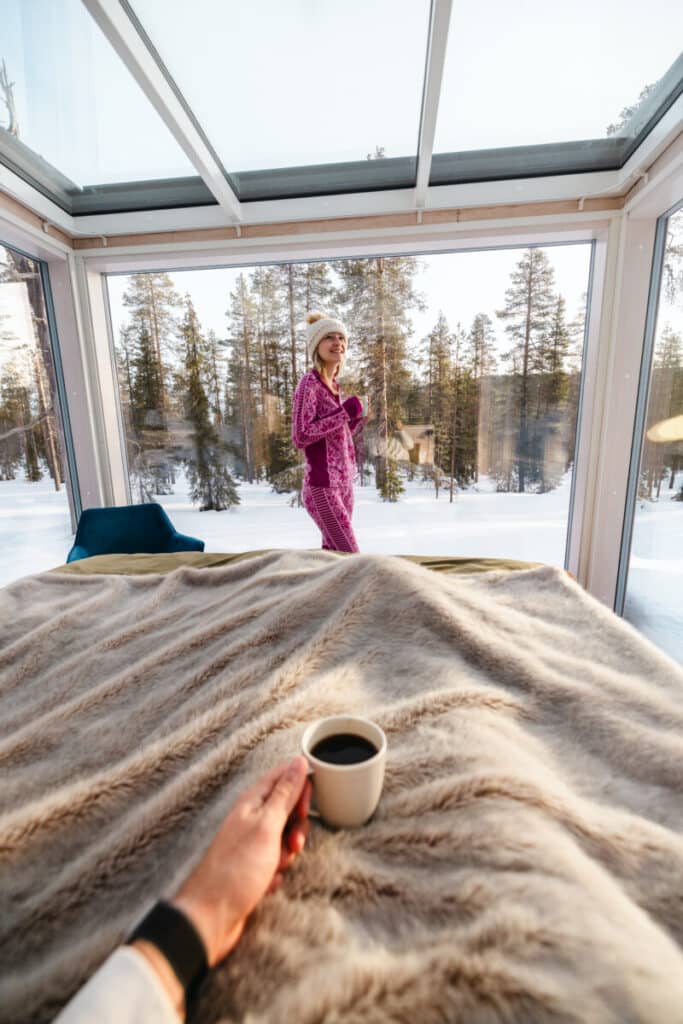
Levi is a great area to see the Northern Lights in Finland. Our favorite spots in the area to see them were up on the side of Restaurant Tuikku’s, and on the lake. Some other great aurora spots in Levi include Kätkä fell, Cafe Panorama Laavu, Levijärvi, Sirkkajärvi, and the Korkeaniemi lean-to (laavu). Immeljärvi.
When you’re not out aurora hunting, Levi is home to Finland’s largest ski resort, featuring 43 slopes and 27 ski lifts. So if you like skiing and snowboarding, you might want to add on some time here! You can also try skiing to the famous Santa Claus Cabin! If you’re traveling with your family, you might enjoy checking out Tonttula as well, which is the elves village near Levi.
We decided to stay at the Arctic Skylight Lodge in a neighboring town over from Levi, however, there are plenty of more local aurora glass igloo options in Levi proper as well.
Stop #8: Rovaniemi, Finland
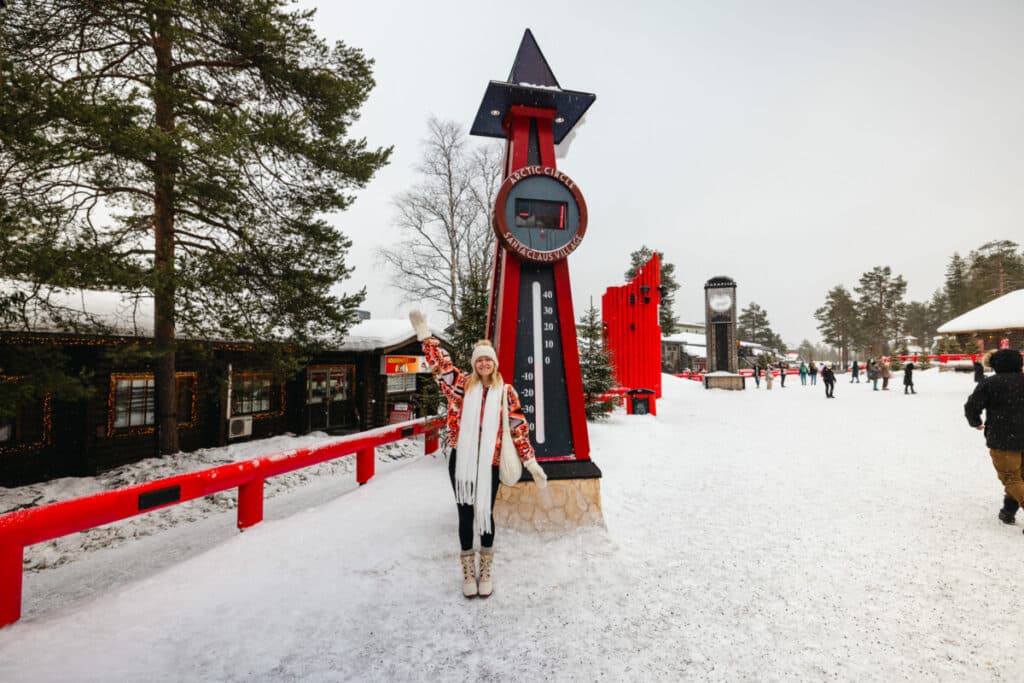
Now, you simply have to make your way back to the Rovaniemi Airport, and that’s it for your epic aurora hunting road trip through Finland, Sweden, and Norway! We hope you have the most amazing trip. Let us know below if you’re planning on chasing the lights in the 2024-2025 season! And, if you want more Aurora Hunting tips, make sure to check out the Best Northern Lights Igloos in Finland!
You may also enjoy:
